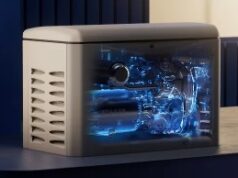
This article challenges some common myths about green retrofits and makes the case for taking the first step or additional steps, beyond towel reuse programs and lighting and toilet retrofits, to reduce your property’s carbon footprint.
The Why
Myth: Going green or greener means depriving my guests and decreasing their comfort level. Converting to more efficient plumbing and lighting fixtures can occur without any compromises to guest experience, if designed correctly. Some retrofit measures such as new controls on space heating, air-conditioning and ventilation systems can even improve the guest experience, while cutting utility costs.
Myth: I can’t be sure that I’ll realize the utility savings that are projected. Vendor savings calculations should be scrutinized carefully. Even though water and electricity savings resulting from more efficient plumbing and electrical are straightforward calculations, it’s important to understand what assumptions were made about utility costs, occupancy levels and operating hours. For more complicated improvements like new central heating, cooling and/or ventilating systems it’s advisable to have a third-party entity, like an engineering or auditing firm, verify the savings calculations. There are also free online tools that can do basic savings calculations including those developed by the Environmental Protection Agency and Energy Star.
Myth: Our property is already green with LED lighting and an optional towel and sheet replacement program. While these efforts represent a good start, they address only a portion of overall usage. Lighting represents only 12 to 20 percent of electric end-use profile. Supplying domestic hot water accounts for up to 15 percent of the total energy demand, but only a portion of this can be attributed to the laundry. (source EE and Conservation in Hotels—Towards Sustainable Tourism).
Why leave savings on the table when there are other low-cost measures like retro-commissioning that can deliver deeper savings. Retro-commissioning is a process of tuning up a building to ensure that is operating as designed. Studies have shown that retro-commissioning can save a typical 100,000 square foot hotel 10 to 15 percent of its energy costs or roughly $20,000 per year. (Energy Star Building Manual)
Myth: Many green retrofit measures are invisible to my guests, so they are not going to help with marketing. While optional towel/sheet replacement programs directly engage with guests, many measures like lighting retrofits, space heating/cooling and ventilation improvements operate in the background unnoticed.
Green certifications brand your property with universally recognized environmental stewardship standards. Some of the certifications include: Energy Star, Green Seal, Green Key, LEED, and TripAdvisor Green Leaders.
The How
Myth: The investment doesn’t make sense, as ownership plans to sell in two to three years. Investing in retrofit work reduces your utility costs and immediately increases your net operating income which in turn increases the value of your asset. For example a property expends $500,000 per year in utility costs and it implements a retrofit which saves 10 percent/year or $50,000. Based on an 8 percent cap rate, the value of that property increases by $625,000.
Green features enhance the property’s market appeal as more guests are demanding environmentally-friendly accommodations. Investors are often willing to pay a substantial premium for a green property.
A property’s energy consumption is becoming a critical make or break selling point. The growing wave of building disclosure laws being enacted across the United States, currently in effect in California, Austin, Washington D.C., Seattle and New York City, require that commercial buildings disclose their energy usage and receive a ranking. Energy efficient operations can give your property a competitive edge.
Myth: I’m going to keep the inefficient equipment I have until it breaks down. How much is it costing you in maintenance/repair expenses and guest complaints to keep that old equipment? It makes sense to calculate these very real costs and compare it to the cost of early replacement. You might be surprised to find you’re being penny-wise and pound-foolish—especially if you are missing out on available rebates, incentives and financing.
Myth: I can’t pay for any retrofit work, there are no capital expense funds available. There are a variety of financing strategies that minimize or even eliminate upfront costs, while giving you the benefit of complete ownership of the equipment at the end of the financing term. A Capital Lease is like a loan and it usually appears on the owner’s balance sheet. It is often used for expensive equipment like boilers or HVAC equipment. An operating lease is more like an equipment rental. It’s usually structured as an operating expense and remains off balance sheet. Check with your CPA to select the right lease structure for your project.
PACE (Property Assessed Clean Energy) financing allows the property owners to pay for their energy- or water-saving improvements by means of an additional assessment on their property tax bill. PACE financing has several advantages that can benefit hotel owners:
• Minimizes upfront cash needed;
• Repayment is scheduled over a five- to 20-year term;
• Payment is off-balance sheet and treated as an operating expense;
• Assessment can be transferred to new owners if the property is sold; and
• Lower cost of capital because PACE transactions are bundled and funded with bonds.
Details of PACE programs vary by jurisdiction. Go to www.pacenow.org to get details about PACE programs in your area.
Myth: I don’t want to use any financing as it requires placing a lien on my property. Operating leases will not require a lien on the property, only on the equipment. PACE never requires a lien on the property.
Myth: Power purchase agreements are the best way to pay for Solar PV. While a power purchase agreement offers pre-set rates for electricity generated by the solar PV system for 15 to 20 years with no upfront expense, the devil is in the details. Key terms and conditions to understand and negotiate in a PPA Agreement include:
• Utility rate charged under the agreement;
• Annual increases to that utility rate;
• Cost impacts to insurance and property tax;
• Maintenance and repair of the equipment;
• Performance guarantee;
• Changes to your property such as changing your roof, expanding the system;
• Sale of the property during the term of the PPA; and
• Buy-out options both pre-term and end-of-term.
The term of the PPA is usually 15 to 20 years, so make sure you’re not getting locked into an agreement that you may regret down the road.
Myth: It’s easier for me to do nothing. There are costs associated with doing nothing. Utility costs are a hotel’s second biggest expense, after labor costs. As rates become more and more competitive, cutting utility costs is a sure-fire way to boost net operating income.
Utility costs are only going to increase. A study by Energy + Environmental Economics predicts the cost of electricity in California alone could jump 47 percent over the next 16 years. The price of water in 2014 increased by 6 percent in 30 major cities across the United States with a 33 percent rise since 2010. (www.circleof blue.org). The U.S. Energy Information Administration Annual Energy Outlook 2015 predicts that natural gas prices could increase 35 percent within 25 years.
Incentives and rebates that help pay for retrofits are often time-sensitive. Utility rebates are often available on a first-come, first-serve basis. The Federal Investment Tax Credit (ITC) which offsets 30 percent of the cost of renewable systems is scheduled to sunset at the end of 2016.
Doing nothing or not doing more can cost you a lot of money.
Fran Hereth, LEED AP,BPI-MFA, is a Founding Principal of Kango Development LLC based in Los Angeles. Kango is a woman-owned, licensed general contracting and consulting firm that provides one-stop green retrofits to hotels and multifamily properties to cut energy and water costs. Kango’s comprehensive design-build services include: audits, financial analysis, construction, Solar PV, Solar DHW, utility rebates/incentives and financing. Contact info: fran@kangodevelopment.com or (323) 627-8291. Learn more about Kango at www.kangodevelopment.com.







